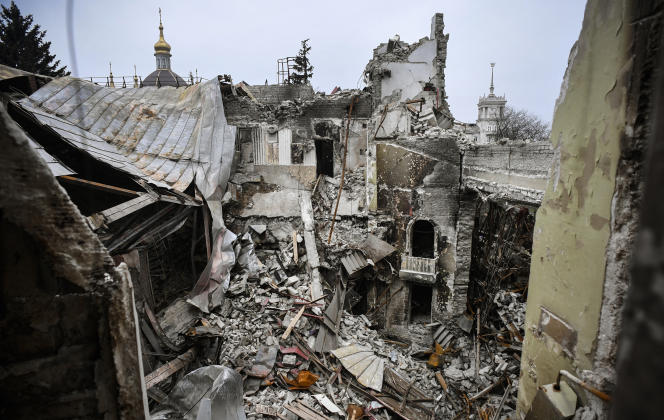The March 16 attack that destroyed the Mariupol drama theatre, where hundreds of Ukrainian civilians had taken refuge, was a “war crime”, Amnesty International said in a report released on Thursday (June 30). According to the NGO, which investigated from March 16 to June 21 and collected fifty-three testimonies, it was “almost certainly an air strike carried out by the Russian army”, perpetrated “very probably with two bombs of 500 kilograms”.
The assumption that the theater was “a valid military objective” is challenged. “There was no military equipment in or near the theatre, no military was firing from the [building], and no military regularly sheltered there.” Moreover, the theatre, located in the heart of a large park, was “clearly identifiable as a civilian object, perhaps more so than any other place in the city”. The strike took place on a clear morning, when the word “children” had been written in Russian on the ground in front of the front and rear entrances to the theater, in letters large enough for planes to see.
“The evidence strongly suggests that the theater was the target of the attack,” the investigation report concludes. Amnesty International adds that it has found “no convincing evidence” to support the Russian Defense Ministry’s explanation that the attack was “a false flag operation carried out by the Azov Regiment of Ukrainian Forces”, which, according to him, would have deliberately destroyed the building from the inside.
The number of victims remains uncertain
The exact number of victims is still uncertain, but the NGO considers it “likely” that it is “much lower than previously announced”. The town hall of Mariupol had claimed that around 300 people had been killed. A subsequent investigation by the Associated Press estimated the number of victims at 600. However, according to Amnesty International, “a large number of people had left the theater in the two days preceding the attack”, thanks to the partial success of the “unofficial” humanitarian convoys. Most of the civilians who remained “were in the theater basement and other areas protected from the blast.”
Witnesses interviewed were able to provide the full names of four people killed. The NGO also obtained the names of three other people they believed to have been killed. Several survivors and other witnesses also claimed to have seen bodies of people they could not identify. Finally, Amnesty International estimates that “at least a dozen people died in the attack, but it is likely that many more deaths went unreported”.














